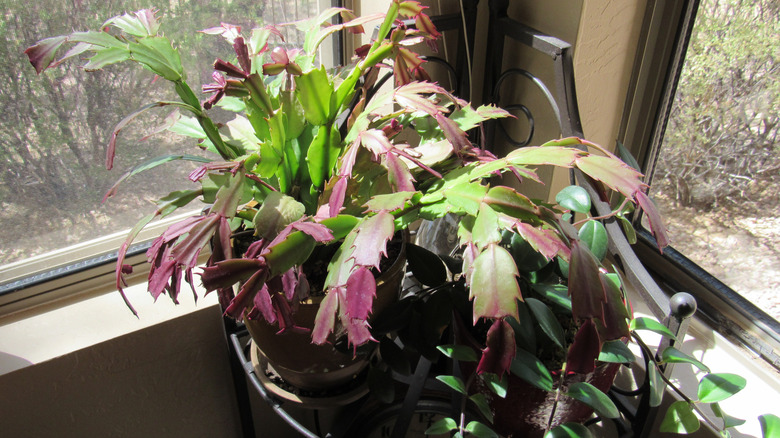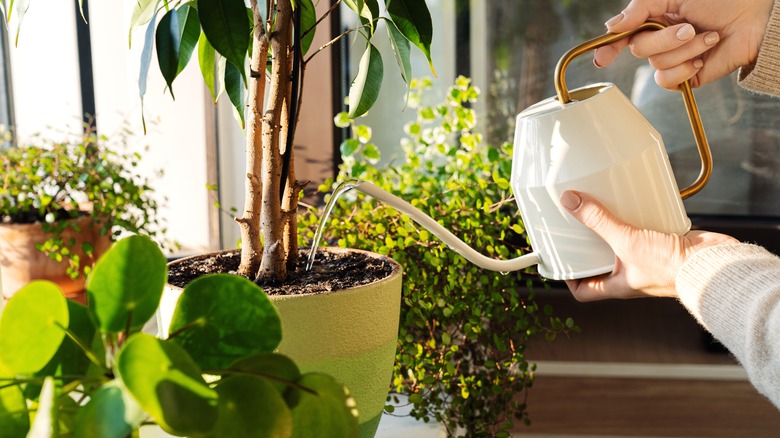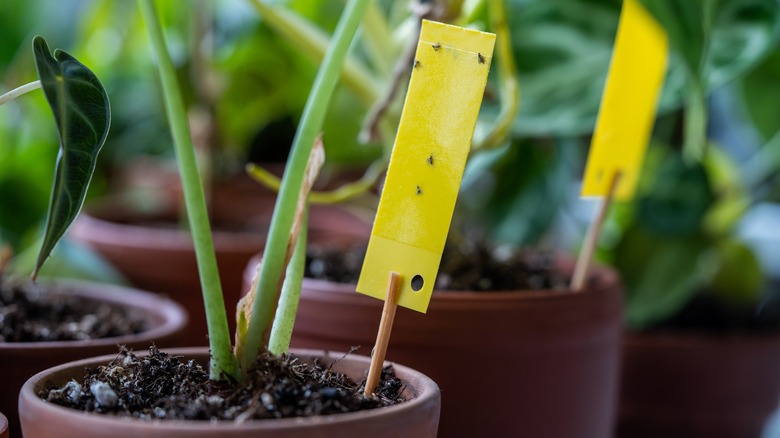What It Means If Your Houseplant Is Turning Purple
If you're a new plant enthusiast or are simply encountering some plant problems for the first time, a houseplant developing an unexpected purple hue may cause some panic. Fortunately, there are a few causes that can be easily remedied. For starters, improper temperatures or excessive sun exposure can lead to a houseplant turning purple. When a plant experiences temperature extremes or intense sunlight, it may perceive these conditions as threats. In response to this stress, the houseplant increases its production of purple pigments, resulting in discoloration of leaves, stems, or other plant parts.
Additionally, high temperatures can cause dehydration and damage plant tissues, prompting the plant to produce purple pigments as a protective mechanism. To mitigate this issue, it's important to provide optimal growing conditions. Ensure the plant is situated in an environment with stable temperatures within its preferred range. Avoid placing the plant near drafts, heaters, or air conditioning vents that can cause temperature fluctuations. Additionally, provide adequate shading or indirect sunlight to protect the plant from intense sun exposure, especially during the hottest parts of the day.
Regularly monitor the plant for signs of stress, such as wilting, leaf curling, or discoloration, and take appropriate actions to address issues promptly. Water the plant consistently, but avoid overwatering, as soggy soil can also stress the plant. Consider using shade cloths, curtains, or blinds to diffuse sunlight and reduce the risk of sunburn on leaves. But it's important to know that there might be other causes for your plant's discoloration.
Improper nutrition
In addition to heat or sun stress, improper nutrition can also turn a houseplant purple due to nutrient deficiencies, particularly nitrogen. Nitrogen is crucial for chlorophyll production, which is responsible for the green color of plant tissues. When a plant lacks sufficient nitrogen, chlorophyll levels decrease, causing the green pigmentation to fade. As a result, the purple pigments become more prominent, leading to the discoloration of leaves or stems.
Nitrogen deficiency often occurs when plants are grown in nutrient-poor soils or when their fertilizer regimen is inadequate. Other nutrients, like phosphorus, are also essential for overall plant health, and deficiencies can exacerbate the issue by further impairing the plant's ability to produce chlorophyll and maintain normal growth habits.
To mitigate this issue of a houseplant, it's essential to address the underlying nutrient deficiencies. Ensure the plant is growing in a well-draining potting mix that provides adequate nutrients. Consider repotting the plant with fresh, nutrient-rich soil if necessary. If you'd rather not repot, consider conducting a soil test to identify the lacking nutrients and fertilize your houseplants accordingly.
Monitor the plant for signs of nutrient deficiencies, such as yellowing or browning of leaves, stunted growth, or purple discoloration. Adjust the fertilizer application frequency and dosage based on the plant's needs and growth rate. It's important not to over-fertilize, as this can lead to further nutrient imbalances or toxicity, which can also stress the plant.
Pest problems
While temperature issues and nutrient deficiencies are most likely the underlying causes of your purpling plants, pest issues can also turn a houseplant purple through indirect stress responses initiated by infestations. Similarly to the aforementioned problems, when pests like aphids, spider mites, or whiteflies feed on a plant's sap, they weaken its overall health and vigor. This can trigger a defensive reaction in the plant, leading to the production of purple pigments as a response to stress. The plant may exhibit this discoloration on its leaves, stems, or other affected parts.
To mitigate the issue, it's essential to identify and address the underlying infestation promptly. Regularly inspect the plant for signs of pests, such as discolored or distorted leaves, tiny insects, or fine webbing. Use insecticidal soap, neem oil, or horticultural oil to control aphids, spider mites, and whiteflies. Treat the plant thoroughly, targeting both the pests and their eggs or larvae.
Additionally, consider using physical barriers like insect nets or sticky traps to prevent further infestations. You may also want to inspect nearby houseplants and isolate the infected plant to prevent the pests from spreading. Improve air circulation around the plant by pruning overcrowded foliage and maintaining appropriate humidity levels to discourage pest activity. By implementing these measures and staying vigilant, you can help the plant recover from stress-induced purple discoloration and restore its health and appearance.


